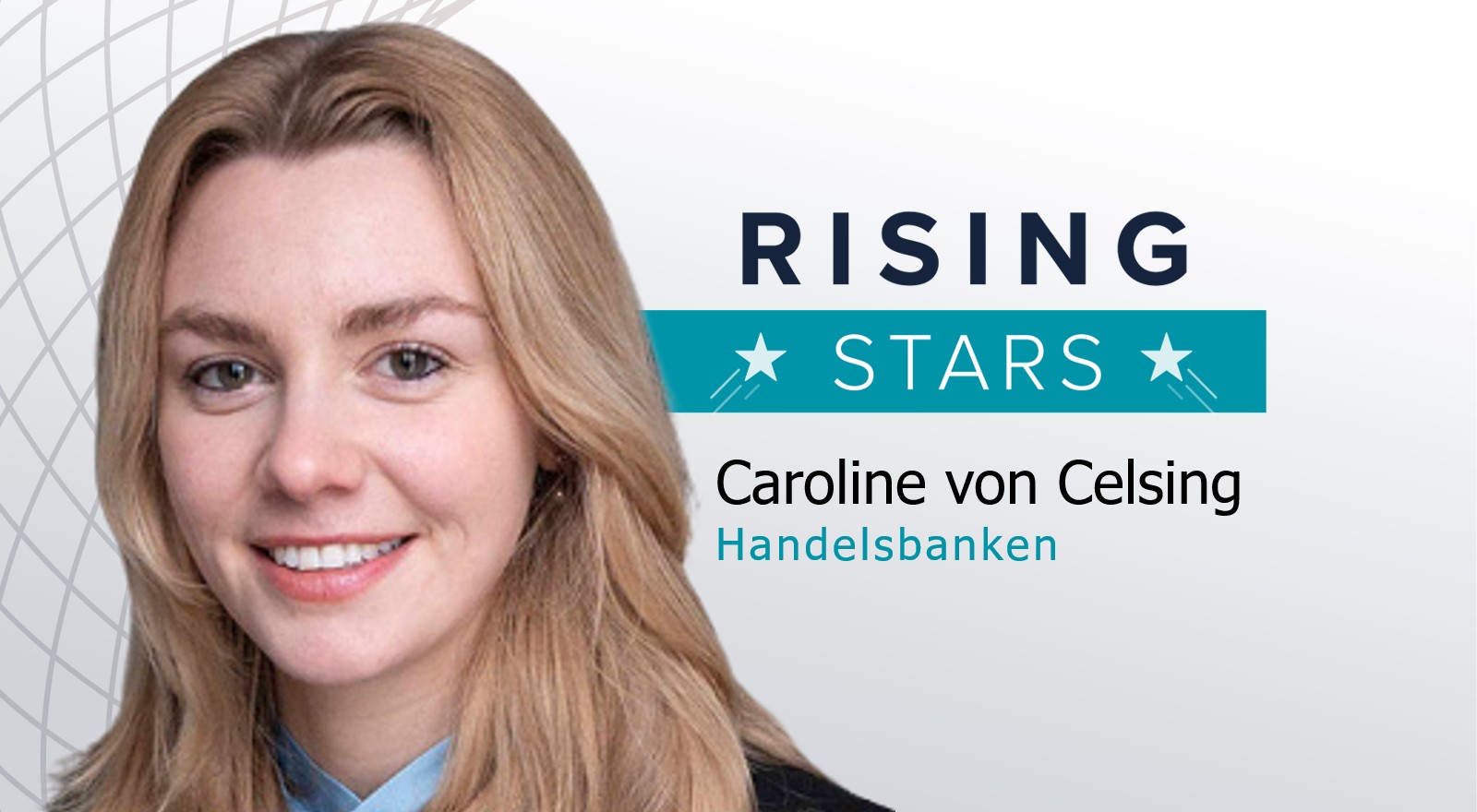The next instalment of our Rising Stars series sees Handelsbanken investment associate Caroline von Celsing speak to ETF Stream about her switch from sustainability into finance, what type of investors she sees herself as and the rise of active ETFs.
Von Celsing started her career at the World Business Council for Sustainable Development (WBCSD) before making the move into fund selection at Handelsbaken nearly three years later.
How did you get into fund selection?
I have an unusual entry into fund selection because I come from a sustainable background. I studied biology at university before a brief stint working for venture capitalists doing biotech investments, with a view to going into the sustainability space. I joined the WBCSD working with big companies on their sustainable policies around the Task Force on Climate-Related Financial Disclosures (TCFD) and nature-based capital.
I also worked on projects around companies issuing green bonds. I took a sustainable finance course at the University of Cambridge and then started my job at Handelsbanken with a focus on primarily on sustainable investments, but also broader markets. I have been enjoying the combination of financial markets and the sustainable investment proposition, although people can be a bit negative.
What role do you play within your team?
I am part of our sustainable investment team but day to day I am a fund selector, selecting non-sustainable funds too, with an eye towards fixed income. We like ETFs at Handelsbanken because the liquidity means they are much easier to trade than an active fund. This does not account for pricing where there is always a bit of an issue. I also form part of our tactical allocation team within our wider funds. We have four sustainable funds and four core funds and we mirror the asset allocation going up the risk spectrum.
Within the sustainable side, I primarily focus on assessing how sustainable our funds are, which has been a challenge of late because what is sustainable? There are many different metrics such as impact, carbon emissions and ESG scores. We use a lot of broad-based passive indices as our building blocks.
What type of investor do you see yourself as?
As a multi-asset investor, I am more of a top-down asset allocator. From a sustainable side, I take a bottom-up perspective, assessing whether an asset class is sustainable. Can we play it sustainably while still making a risk and return profile and do we need to diligently manage whatever that product is? For example, we have a carbon credit position, an area which is a really exciting and an important new sustainable tool, but it can be pretty volatile.
Where is further development needed within the fund selection space?
Active ETFs are a new space and have a lot of potential. It will be interesting to see what happens around transparency, which is great but could potentially be a negative when you have an actively managed portfolio. In the sustainable space, we will see the transition concept take off because exclusions do not really make sense, you need companies to move forward sustainably. Green bond funds are also growing which is exciting because it shows markets getting deep enough to produce all these border-based green bond ETFs.


